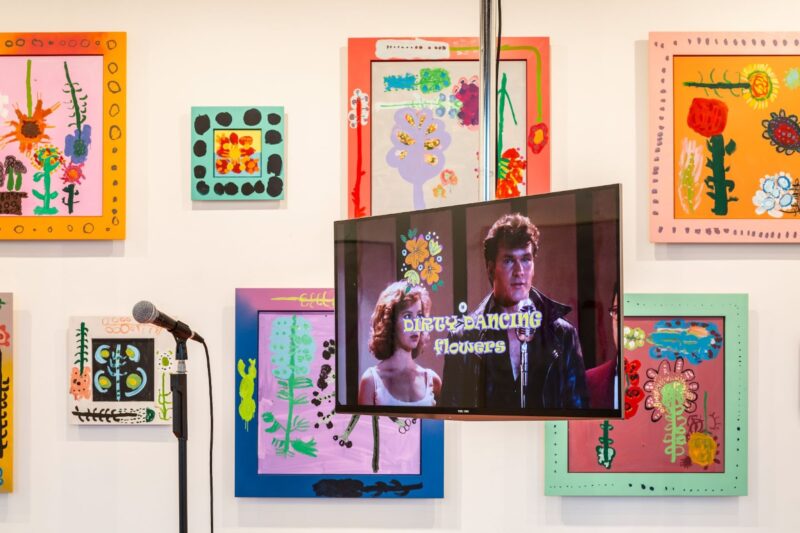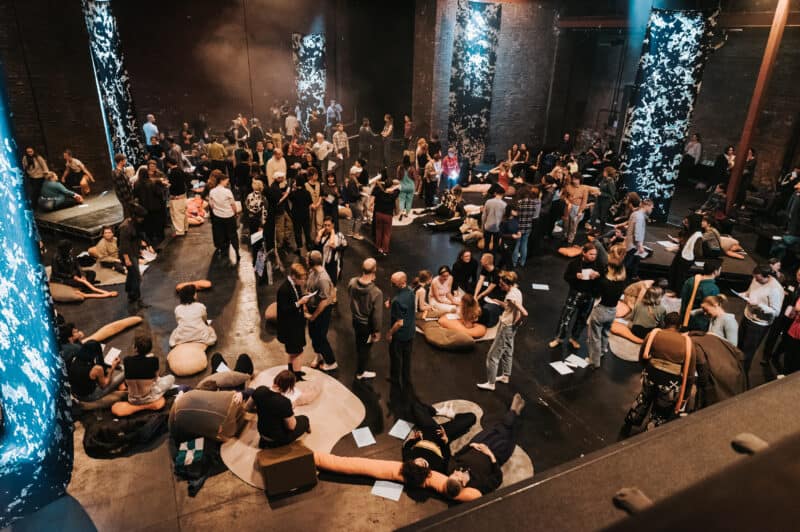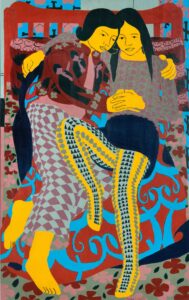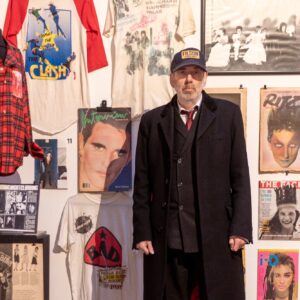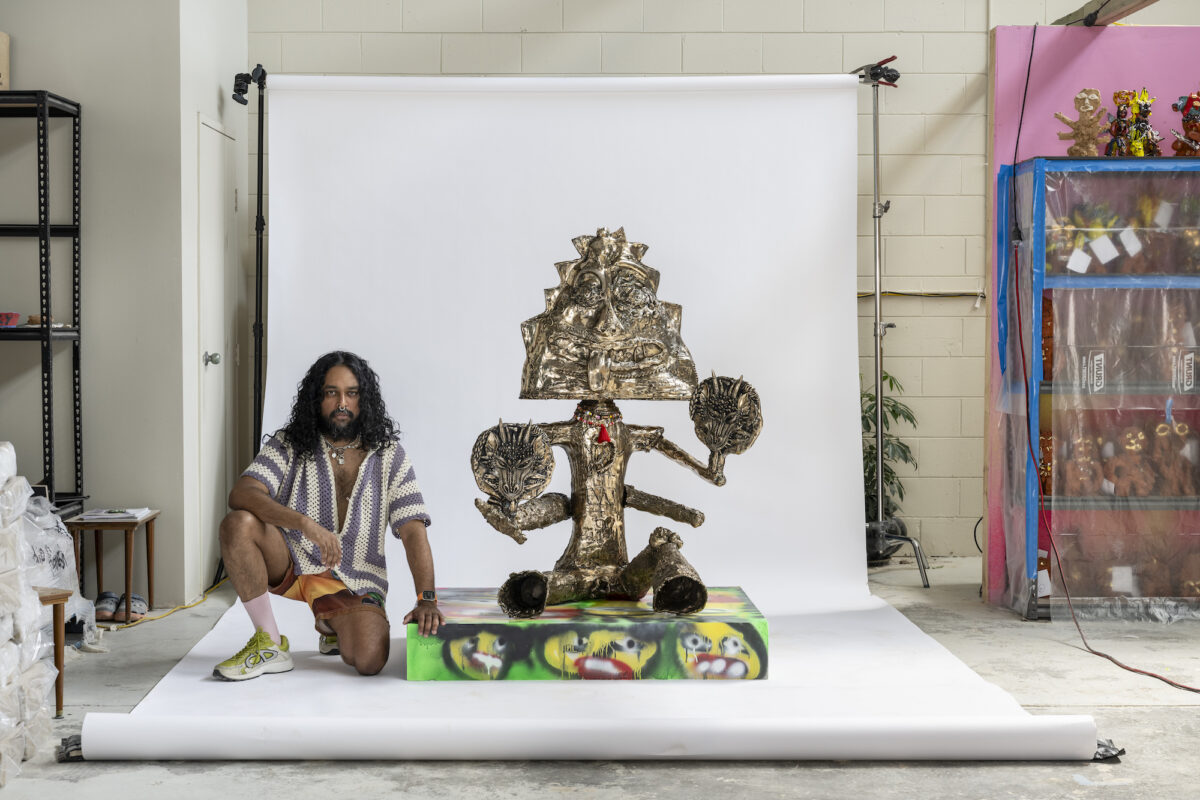
Tramway, Glasgow is to present Idols of Mud and Water – Sydney-based artist Ramesh Mario Nithiyendran’s first institutional solo exhibition in the UK and Europe, opening in Tramway’s main gallery, a former Tram depot on Friday 24th November and running until April 2024

Drawing from historical figuration as well as contemporary influences, Ramesh Mario Nithiyendran (b. 1988 Colombo Sri-Lanka, Australia from 1989) crafts exuberant, ceramic sculptures inspired by global histories of figuration, religious iconographies and contemporary culture.
Ramesh’s ritualistic sculptures evoke ancient deities or totemic idols, gesturing to shared histories and plural cultural identities. Colourful, hybrid, human-animal sculptures echo the multifarious and coexistent belief systems that reflect the artist’s own ancestry, inspired by religious imagery and mythological narratives across South Asia. Arriving with his parents in Sydney as a Tamil refugee in 1989, Ramesh’s wider family practiced Hinduism and Catholicism to varying degrees, and Hindu, Christian and Buddhist cultures have coexisted and have intertwined in Sri Lanka for centuries. This syncretic approach to understanding relationships between global histories and philosophies is encapsulated in his new exhibition for Tramway Idols of Mud and Water.

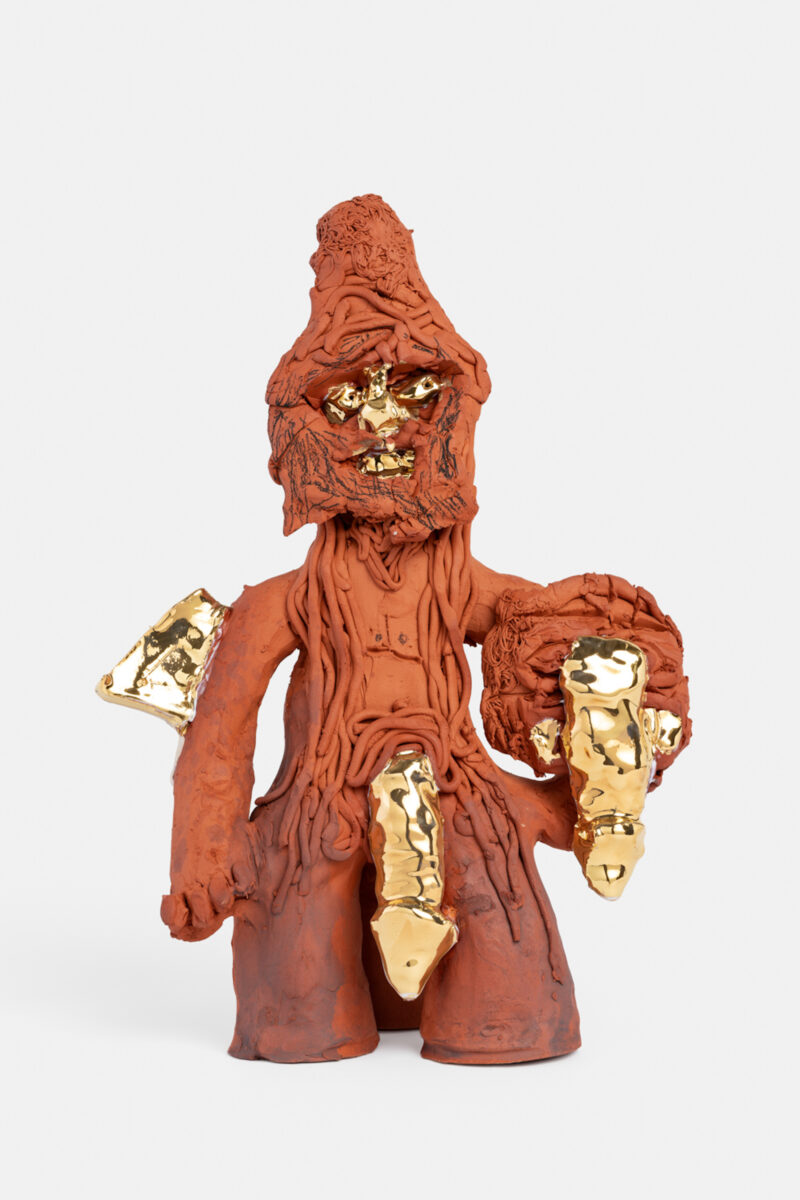
Exploring these themes of polyphonic identity through a contemporary lens, Ramesh’s figurative sculptures explore his own multifarious influences and themes of idolatry within popular culture. Though they resemble ancient idols, Ramesh’s figures are often adorned in contemporary fashions or reflect a queer sensibility. Lathered in colourful glazes and adopting playful poses, they are often highly performative or engaged in some form of heightened display, introducing electricity, neon and other contemporary raw elements into an otherwise ancient visual lexicon.
Subverting museum tropes, Ramesh‘s gestural sculptures stand atop crude, irregular plinths, enhanced by LED Lighting, bursts of mist and kinetic elements. This theatrical, world-building approach sets up a dynamic relation between audience, figure and space which resists any singular reading or perspective. The gallery becomes, in the artist’s words, a ‘buzzing mythological playground’ in which queer politics, anthropomorphism, zoology, monumentality and popular culture combine to create new, speculative mythologies.
While the ceramic figures are highly accomplished and the product of elaborate modelling and glazing techniques, Ramesh is also interested in the symbolic functions of physically molding clay, mud or earth. The tactile processes of making are left visible and his ceramic surfaces seem to bristle with a potent energy. At Tramway Ramesh explores these primordial, alchemic relationships to material, tracking back to terracotta as a medium and the true nature of unglazed terracotta, which is rudimentary, raw and earthy.
Juxtaposing the soft, tactile and organic red clay, with neon lighting and kinetic elements, the artist will dramatically populate the space with a melange of multi-limbed, fertility, guardian, protector, joker and warrior figures. Connected by a narrative related to mud and water and the polymorphism of Hindu gods, whose avatars manifest in colourful, hybrid, human-animal forms, these anti-monuments vary dramatically in scale from a terracotta army of smaller sculptures to an omnipresent guardian figure that extends to the rafters of the ceiling.
Housed amongst a seemingly improvised, makeshift architectural structure made from a range of repurposed materials including bamboo, scaffolding, metal sheeting and recycled timber, the figures are also connected by a narrative of mud and water. Mist hangs in the air evoking the feeling that we are entering a flooded ruin or a space of dreams, apparitions, visions and divinations, whilst a fountain dramatically pumps muddy water, symbolising the mixing of earth and water.
The use of mud as a material in various states resonates as the aftermath of flooding, shifting with increasingly vagarious climatic events. Mud is political and nearly all cultures are thought to have a flood myth. Natural disasters and floods are common occurrences that impact South Asia specifically and the installation looks to symbolic and mythological instances related to these elements. Throughout the Tramway exhibition, Ramesh explores the flood and its occurrences as a motif in various mythologies as a narrative starting point for this work.
In this way, Mud as a material responds to global debates on the impacts of climate change, yet the project is not apocalyptic or didactic: the plasticity of the core material echoes the growing fluidity across genders, races, belief systems and even species that underpins Ramesh’s vision. Inclusive, democratic, bold, electrifying, secular and ambiguous, the gallery is converted into a space for myth and ritual, in which the audience is invited into playful choreographies which encourage them to explore, inhabit and interact with the installation via a series of meandering pathways and intimate spaces.
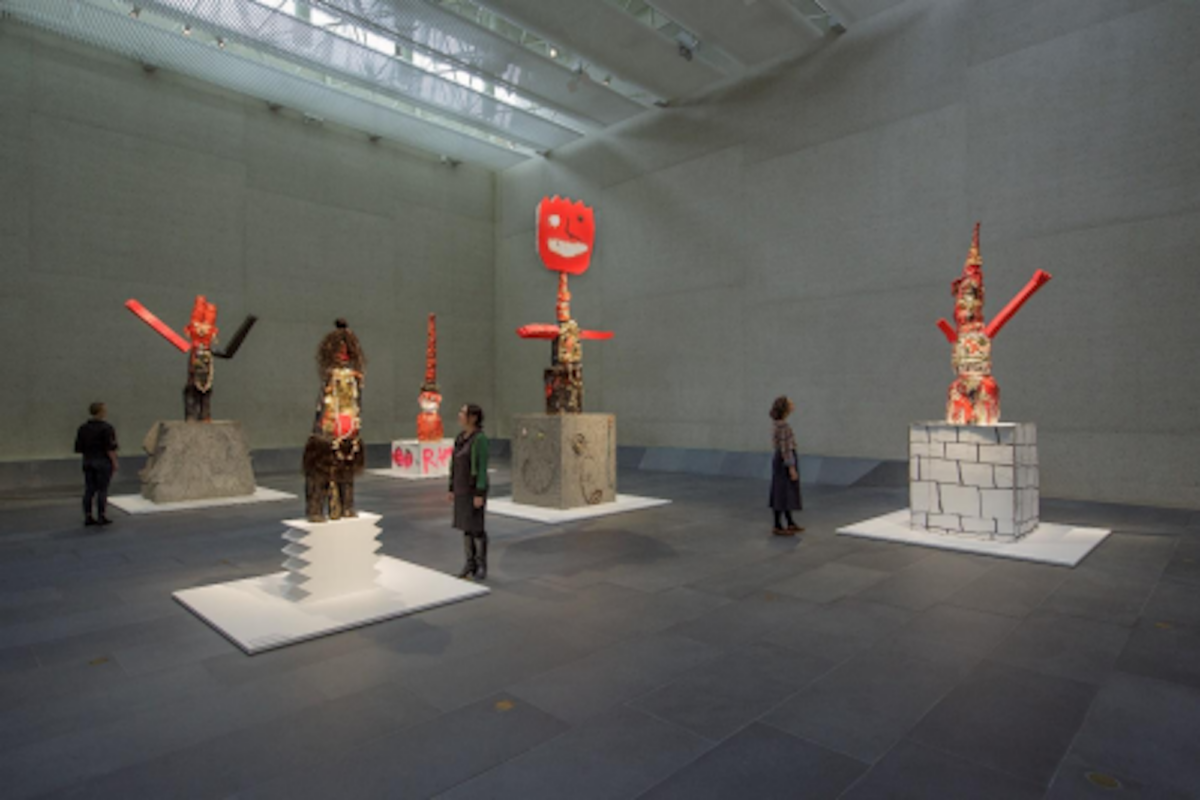
Ramesh Mario Nithiyendran – Idols of Mud and Water, 25th Nov 2023 – 21st Apr 2024, Tramway
Idols of Mud and Water has been commissioned by TRAMWAY and is supported by Australia Council for the Arts and Creative Scotland.
About the artist
Nithiyendran received his BA/BFA from the University of New South Wales in 2011 and a MFA from the University of New South Wales in 2013. His work had been exhibited widely in solo and group shows internationally, including: Kiran Nadar Museum of Art, Delhi (2023); Sharjah Art Foundation, Sharjah (2022); Art Gallery of New South Wales, Sydney (2022); The Museum of Applied Arts and Sciences, New South Wales (2021); Melbourne Art Foundation, Melbourne (2020); Sullivan + Strumpf, Sydney (2019); Casula Powerhouse Arts Centre, Casula (2019); Ian Potter Museum of Art, Melbourne (2016); The National Gallery of Australia, Canberra (2016); Dhaka Art Summit, Dhaka (2016); Adelaide Biennial of Australian Art, Adelaide (2016); Kuandu Biennale, Taipei (2016); Shepparton Art Museum, Victoria (2015); Gallery 9, Sydney (2015).
Ramesh Mario Nithiyendran’s works forms part of many public collections, including Art Gallery of New South Wales, Sydney; Art Gallery of South Australia, Adelaide; Art Gallery of Western Australia, Perth; Artbank, Sydney; Bendigo Art Gallery, Victoria; Home of the Arts, Queensland; The University of Melbourne, Parkville; Museum of Applied Arts and Sciences, Sydney; National Gallery of Australia, Canberra; Shepparton Art Museum, Shepparton; University of New South Wales, Sydney; Powerhouse Museum, Sydney; Casula Powerhouse, New South Wales; Ian Potter Museum of Art, Parkville; Wollongong Art Gallery, New South Wales.
Nithiyendran is frequently presented to the public in a diverse range of print, online and television media related to art, culture and fashion. In 2019, he received a Sidney Myer Creative Fellowship which recognised his outstanding talent and exceptional professional courage. This same year he presented work in the largest historical survey of LGBTQ Asian Art at the Bangkok Art and Cultural Centre. His first 368 page monograph, titled RAMESH was published and internationally distributed by Thames & Hudson in 2022.
Nithiyendran is represented by Sullivan + Strumpf, Sydney + Singapore. and Jhaveri Contemporary, Mumbai.
About Tramway One of Scotland’s leading international art-spaces, the venue acts as a hub for creative excellence in contemporary visual art and performance by developing presentation and production opportunities supporting ambitious commissions and the production of new exhibitions by both Scottish and International artists. tramway.org
About Glasgow Life Tramway is a Glasgow Life venue, a charity working for the benefit of the people of Glasgow. We believe everyone deserves a great Glasgow life and we find innovative ways to make this happen across the city’s diverse communities. Our programmes, experiences and events range from grassroots community activities to large-scale cultural, artistic and sporting events which present Glasgow on an international stage. glasgowlife.org.uk

